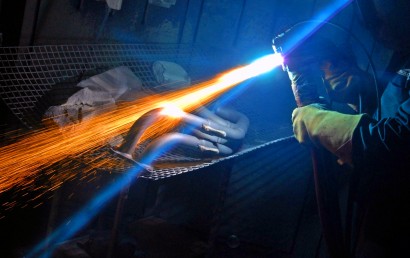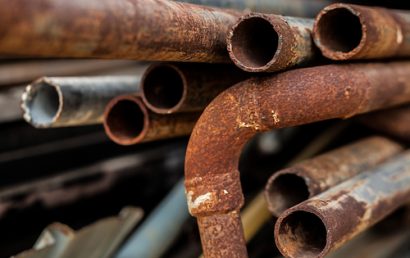How Does Galling Affect Fasteners?
Metal on metal joints can be severely damaged by galling. Fortunately, there are methods that can lead to better fastener performance by reducing the problem of galling.
We’re going to take a look at how galling affects fasteners and, more importantly, how to eliminate it.
Galling – What’s It All about?
When tightening fasteners, one of the most common problems is galling. It’s a type of wear that occurs when, under load, metal surfaces rub against each other. Rubbing across each other, their microscopic (yet rugged and sharp) metal projections generate local stress. Plastic deformation results due to the disruption of passive oxide layers in the metal. This increases adhesive attraction because of locally generated heat. The more it rubs, the more the two surfaces try to bond together. Eventually they can become almost welded to each other.
The fasteners may not loosen, once galled, but the affected joint can still fail because it is not properly tensioned – particularly when put under a service load. Mating components can become shared or twisted off, stripped, or seize as equipment is affected.
An Example of Galling’s Affects
Let’s say, for example, that galling took place within the parts for a truck. When, on the assembly line, it occurs sporadically, the truck’s durability, reliability, and overall quality can be affected. As broken or galled fasteners need to be replaced or removed, repair and maintenance costs increase. Additionally, repairs may be needed at the holes where the fasteners are applied. If not mitigated or eliminated, the galling-promoting fastener features can severely affect equipment. But it can also affect the assembly line, exposing it to downtime, recurring delays, and occupational hazards.
What Promotes Galling?
Things that contribute to galling are as follows:
- Using locking fasteners
- Using fine-threaded fasteners
- The absence of lubricants
- Rough surface finishes
- Low surface hardness
Preventing Galling
Unfortunately, in certain applications, fastener performance relies on some of those things (above listed). So, it’s vital that a fastener’s properties be balanced accordingly. One way to accomplish this in corrosive environments is to, between anti-galling properties and corrosion resistance, find a balance.
It’s not easy, however, to prevent galling by balancing a fastener’s properties. Performance is a big consideration in this endeavor. Features of fasteners need to be combined by experienced application engineers to solve the problem. Today, there are redesign fasteners and patches being used that have been developed by these application engineers which help to prevent the galling.
Other ways to avoid galling are as follows:
- Check that equipment is assembled properly.
- Make sure that fastener quality is at a high performance level.
- Be sure the joints are designed properly.
- Do not under tighten or over tighten fasteners.
- In certain instances (high-tensile steels), watch for hydrogen embrittlement.
Galling Resistance through Thermal Spray
One of the best ways to discourage galling is through the use of thermal sprayed coatings. With these coatings, a number of desired effects can be achieved. Which material is used for coating depends on the desired effect appropriate for the situation (industry, machinery, components, etc.).
If galling is a problem in your industry, the best thing to do is contact the experts at A & A Coatings. We are experienced in every industry under the sun and provide protective coatings for countless machines, components, parts, surfaces, and more. We also have machining, lapping, and grinding capabilities. Contact us today for more information.



